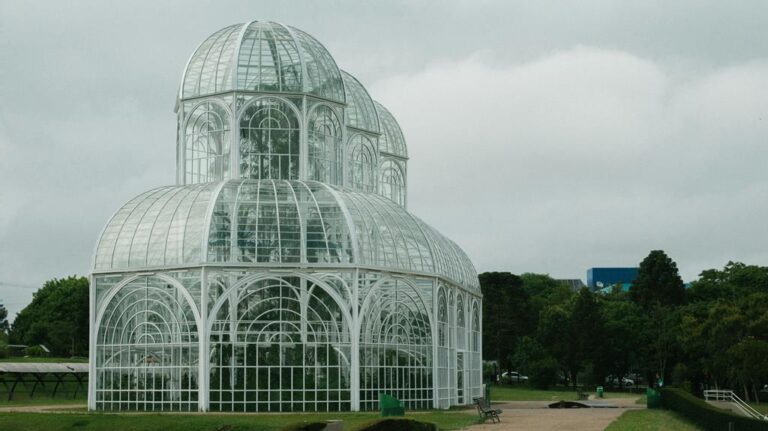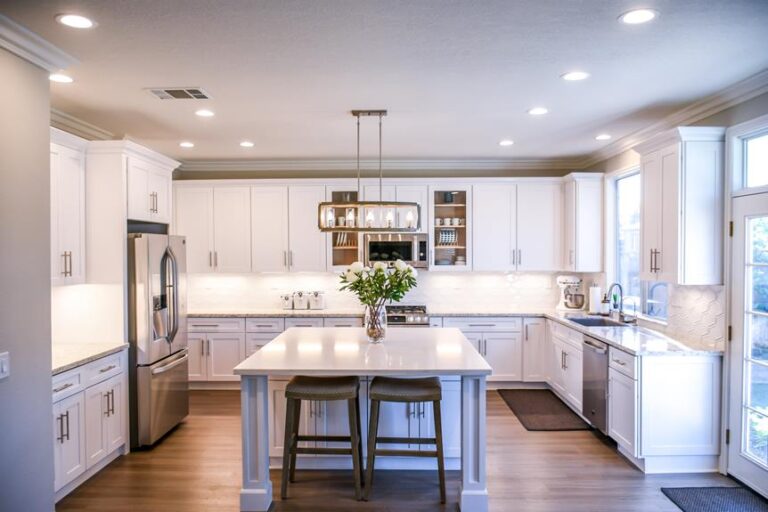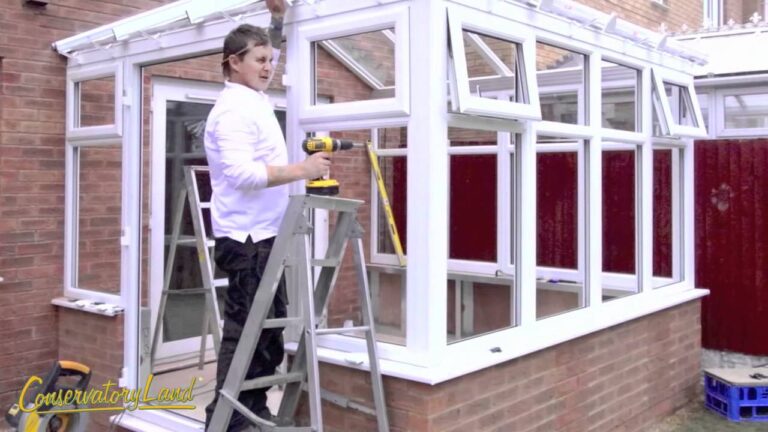Conservatory Plans
Embarking on the journey of planning a conservatory can transform your living space, introducing a blend of functionality and aesthetic appeal. The process entails a thorough understanding of regulatory requirements, including planning permission and construction standards, to ensure a seamless integration with your property.
Engaging with qualified professionals and considering key factors such as energy efficiency and material selection are pivotal steps in realising your vision. However, the journey does not end here. The strategic utilisation of space and incorporation of natural light play a crucial role in enhancing the conservatory experience, aspects that warrant a closer examination to fully appreciate the potential of your future conservatory.
Key Takeaways
- Precise floor plans and detailed window constructions are essential for conservatory design.
- Compliance with local planning permissions and building regulations is crucial for project approval.
- Selecting skilled contractors with experience in conservatory projects ensures project success.
- Incorporating energy-efficient materials and versatile design enhances conservatory functionality and appeal.
Understanding the Basics of Conservatory Design
Understanding the fundamentals of conservatory design involves recognising the significance of precise floor plans. These plans incorporate standard wall types with variable thicknesses for the strategic placement of windows and doors.
Architectural plans for conservatories must meticulously detail window constructions to ensure a seamless, single-pane aesthetic. This approach avoids the complexity of multiple casements and fosters a sense of belonging among those invested in the innovative realm of conservatory architecture.
Need for Planning Permission
Understanding the necessity of planning permission for conservatories in the UK involves recognising the specific circumstances under which permission is mandated and how to adeptly navigate local regulatory frameworks.
While most conservatories fall under permitted development rights, certain conditions necessitate obtaining formal approval to ensure compliance with building regulations.
This segment explores the intricacies of when and why planning permission is required and the strategies for effectively manoeuvring through local regulations to secure approval.
When and Why Permission is Required
Navigating the intricacies of planning permission is essential for homeowners considering the addition of a conservatory. Certain criteria and locational considerations dictate the necessity of obtaining approval. Under permitted development rights, conservatory plans often bypass the need for planning permission, provided they adhere to size and location stipulations.
Consulting the UK Government Planning Portal ensures compliance, preempting potential legal and sales complications and aligning with the homeowner’s aspiration for a harmonious addition.
Navigating Local Regulations
A thorough examination of local regulations is imperative for homeowners contemplating the addition of a conservatory, as these dictate the necessity of acquiring planning permission.
Mastery in how to draw plans for a conservatory, aligning with specific rules based on size, location, and design, ensures seamless integration.
A plan of square conservatory must consider the Party Wall Act 1996 and building regulations for a compliant, harmonious extension.
Essential Conditions for Conservatory Construction
To ensure the successful construction of a conservatory, it is imperative to adhere to specific glazing proportions, planning permissions, and building regulation criteria.
- Conservatory design plans must include at least 50% side wall area glazed and 75% roof glazed.
- Conservatory window plans should consider size, height, and distance from boundaries for planning permission.
- Planning designing a conservatory involves understanding exemptions from traditional building regulations.
- Compliance with building regulations is crucial for conservatories over 30 square meters.
Choosing the Right Contractors
Selecting skilled contractors is crucial in the realisation of conservatory projects. Proficiency in construction must blend with aesthetic sensibility. Potential builders should be assessed on their history in conservatory construction. This can be shown through comprehensive portfolios and verifiable client testimonials.
This stage requires a careful approach. It highlights the significance of qualifications for specialised work, such as electrical and gas installations. Moreover, there should be an open communication channel concerning project costs and timelines.
Finding Skilled Professionals
Embarking on the construction of a conservatory necessitates the engagement of skilled professionals to ensure the project’s success and sustainability. When creating architectural plans for a round conservatory or drafting conservatory house plans, knowing how to measure a conservatory plan is crucial.
- Prioritise contractors experienced in conservatory projects for quality assurance.
- Seek referrals from your network or trusted online platforms.
- Choose professionals with a verifiable track record.
- Discuss and agree on clear payment and project terms upfront.
What to Look for in a Conservatory Builder
Choosing the right conservatory builder involves evaluating their proficiency in constructing energy-efficient structures, which is essential for ensuring both comfort and cost-effectiveness.
Seek builders experienced in creating conservatory plans drawings and aligning with conservatory house plan specifications. Verify their understanding of floor plan conservatory requirements for multi-storey homes and exemptions from building regulations.
Opt for those recommended by trusted sources, and discuss payment and expense handling upfront to prevent misunderstandings.
Maximising Conservatory Potential
To optimise the functionality and aesthetic appeal of a conservatory, careful consideration of design principles is paramount.
By selecting energy-efficient materials and strategic layout planning, the space can serve multiple purposes, from a tranquil relaxation area to an invigorating home gym, without compromising on style or comfort.
Implementing organisational strategies and choosing versatile furniture further enhances the conservatory’s potential as a dynamic, yet cohesive extension of the home environment.
Design Tips for Optimal Use
Maximising the potential of your conservatory involves selecting energy-efficient glass, which not only maintains optimal comfort levels but also significantly reduces energy costs.
Consider versatile uses like a gym or breakfast room to enhance the space’s utility.
Avoid using the conservatory for storage to keep it functional and welcoming.
Maintain cleanliness and organisation for optimal usage.
Resist cluttering the space with unnecessary items, ensuring an open, inviting environment.
Incorporating Functional and Aesthetic Elements
Building on the foundational aspects of design and utility is essential for optimising the potential of your conservatory as a versatile living space. Incorporating functional and aesthetic elements into the space is key.
Strategically placed windows and roof glazing maximise natural light. Integrated heating and proper ventilation ensure year-round comfort.
Selecting complementary furniture and decor enhances the space’s appeal. This allows for diverse uses such as a home office, reading nook, or dining area.
Drafting Conservatory Plans
In the realm of conservatory design, the creation of detailed drawings and floor plans is a foundational step, combining precision and innovation to visualise the final structure.
Techniques for accurate measuring and planning are indispensable, involving the strategic placement of windows, doors, and the careful dimensioning of spaces to ensure both aesthetic appeal and functional utility.
The utilisation of advanced drafting tools and a comprehensive catalogue of 2D symbols further enhances the clarity and effectiveness of conservatory plans, setting a high standard for design and execution.
Creating Detailed Drawings and Floor Plans
Drafting detailed conservatory plans necessitates incorporating standard wall types with various thicknesses, meticulously placing windows and doors for optimal design and functionality.
- Utilise walls with varying thicknesses to support window and door placements.
- Position windows and doors thoughtfully, considering design uniformity and functionality.
- Incorporate 2D door symbols, specifying details like hinge and opening direction.
- Define roof types and materials, ensuring accurate 3D representation.
Techniques for Accurate Measuring and Planning
Accurate measuring and meticulous planning are foundational to the successful drafting of conservatory plans, requiring a combination of precise tools and innovative techniques.
Using a tape measure ensures exact dimensions, while a scale ruler translates these into detailed graph paper layouts. Incorporating key architectural features and considering natural light and ventilation leads to optimal functionality.
Drafting tools like T-squares and compasses enable the creation of precise floor plans and elevations, fostering a sense of belonging and achievement among designers.
Architectural Designs for Conservatories
In the realm of conservatory plans, the exploration of various architectural styles provides a foundation for innovative and aesthetically pleasing designs.
Special features of round conservatories, such as their unique shape and the challenges it presents for integration with traditional structures, necessitate a detailed examination of design principles and techniques.
This discussion will focus on the architectural nuances and the specialised design considerations required to successfully implement these features into conservatory plans.
Exploring Different Architectural Styles
Exploring different architectural styles reveals a diverse array of designs suited for conservatories, each with unique features tailored to various preferences and functional requirements.
- Lean-to Conservatories: Modern, simple design with a single sloping roof for a sleek appearance.
- Victorian Conservatories: Traditional, ornate style with a bay front and decorative cresting, offering elegance.
- Edwardian Conservatories: Maximises floor space and light with a rectangular shape and pitched roof.
- P-Shaped Conservatories: Combines Lean-to and Victorian features for versatility and spaciousness.
Special Features of Round Conservatories
Having examined various architectural styles for conservatories, it’s now pertinent to focus on the distinctive characteristics of round conservatories, which offer a unique blend of aesthetics and functionality. These conservatories feature curved walls and a circular layout, maximising natural light and panoramic views.
The rounded shape adds modern visual appeal, creating a cosy, intimate space. Specialised planning and construction ensure structural integrity and aesthetics, fostering a sense of belonging.
Planning Your Conservatory Layout
In planning your conservatory layout, the integration of an effective floor plan with your home’s existing architecture is paramount. This requires meticulous consideration of:
- Wall types
- Window and door placement
- Precise dimensioning
To ensure both aesthetic coherence and structural integrity. By focusing on these elements, the transition between the conservatory and the main residence can be seamless, enhancing the overall functionality and visual appeal of the space.
Effective Floor Plan Design
Designing an effective conservatory layout necessitates careful consideration of standard wall types, their thickness, and the strategic placement of windows and doors for optimal functionality and aesthetics.
- Utilise single windows, ensuring seamless integration into walls.
- Precisely define roof types, ensuring contours follow wall outlines with glass cladding.
- Create joint projects for comprehensive floor plan coherence.
- Access extensive guides for detailed, self-directed plan drawing and editing.
Integrating the Conservatory with Your Home
To ensure a seamless aesthetic and functional integration of the conservatory with your home, meticulous planning of the layout is paramount, taking into account the existing architectural style and the flow between spaces.
Design strategies should harmonise with your property’s aesthetics, incorporating matching flooring or colour schemes for unity.
Strategic placement of windows and doors leverages natural light, enhancing connectivity with outdoor spaces, ensuring a cohesive, welcoming environment.
Windows and Natural Light Considerations
Maximising natural light through carefully planned window designs significantly enhances the energy efficiency and comfort of conservatories.
Utilising energy-efficient glazing options, like Low-E glass, controls temperature and minimises UV exposure.
Strategic window orientation optimises sunlight, ensuring warmth in winter and shading in summer.
Proper window placement boosts ventilation, fostering a comfortable atmosphere.
Designing windows to maximise natural light reduces the dependence on artificial lighting, conserving energy.
Conclusion
In summing up the key aspects of conservatory planning, it becomes evident that attention to detail in window placement, roof design, and the use of advanced software tools significantly enhances both the aesthetic and functional value of these structures.
Strategic choices in materials and dimensions foster a sense of belonging, transforming these spaces into personal havens tailored to the unique preferences and requirements of each individual.
Frequently Asked Questions
What is the 4-year rule for conservatories?
The 4 Year Rule refers to a regulatory guideline allowing for the construction of conservatories without planning permission, provided they are completed within four years. This facilitates project flexibility while emphasising adherence to avoid potential legal complications.
How big can a conservatory be without planning permission?
In the UK, a conservatory can be built without planning permission as long as it does not exceed 30 square metres in floor area, in line with regulations aimed at making home extension projects easier within a neighbourhood.
Is it cheaper to build a conservatory or extension?
Constructing a conservatory usually costs less than building an extension, with expenses ranging from £10,000 to £30,000. This investment improves living areas and can boost the value of the property.
Do I Need an Architect for a Conservatory?
For constructing a conservatory, an architect is not typically required, as many designs fall within permitted development rights. However, complex or customised projects may necessitate architectural drawings to ensure compliance and optimise structural integrity.






